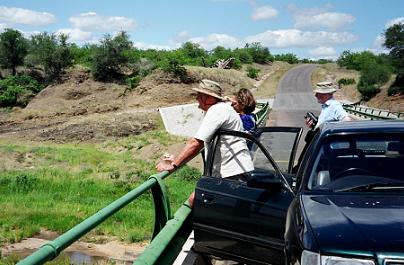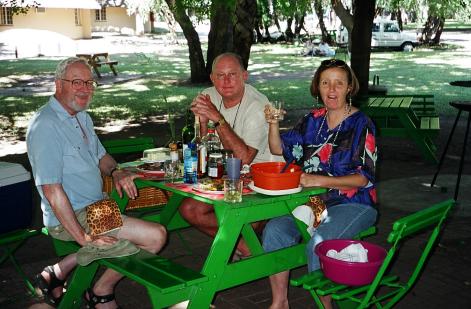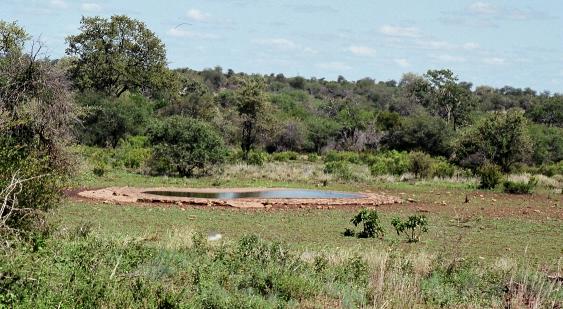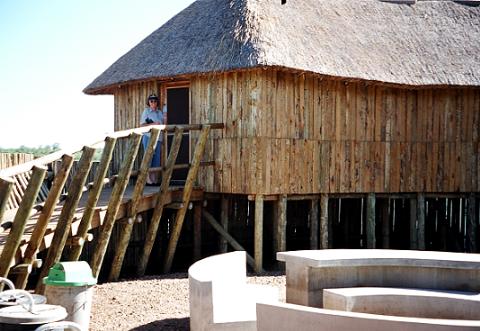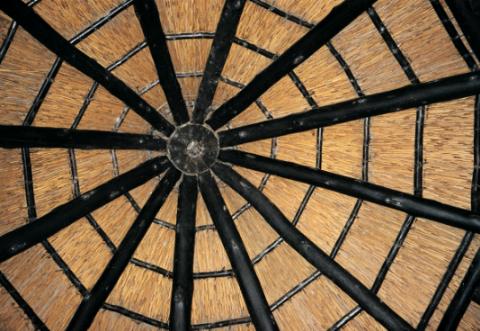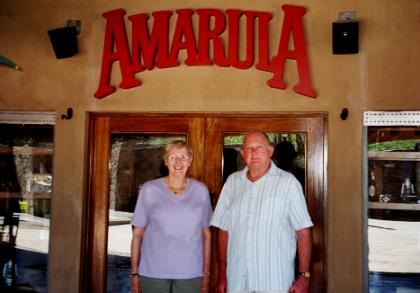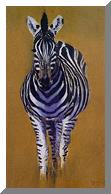We used our three days at Olifants getting in as much game driving as we could.
Here are Tony, Erika and Bill taking a very welcome break on one of the big
bridges where you are allowed to get out of the car.
And we still had our terrific lunches thanks to our resident chefs.
On the last day we had one of the most exciting sightings of the trip--no
pictures unfortunately because it was so brief. We took a small loop road which went by a
rather large natural wall of dark stones. We paused to look at something--don't even remember
what now, when Tony shouted, "What's that!!" We all looked and all saw the most beautiful
leopard go a short distance on level ground and then go up and over a low place in the stone
cliff. It was over in a moment, but will always be remembered. It was the first leopard
the Cheethams had seen in the six years they have lived near the park and the best view we have
had of one in the park too.
End of excitement. Here is a view of one of the manmade waterholes that
the park has built for times of drought when there is no water in the rivers. These are kept
full from a nearby deep well/borehole, often pumped by windmill.
The last stop we made on the way out of the park was to the new hide/blind at
Sable Dam. It is one that you can reserve for your group and spend the night in. When
you get inside, the front wall over the dam is lined with long narrow windows for viewing game at
the water. The wall on this side is lined with fold away beds for about a dozen people.
The bathroom facilities are a little basic, but okay. Cooking is done over a fire built in
the pit in the circle of cement benches in the foreground.
In case you haven't seen thatch roofing from the inside before, this is what it
looks like. This was in our rondavel at Olifants. It smells wonderful when it is new--like Africa!
We stayed at the Cheethams for a few days and took some local tours. Here
are Tony and I in front of the Amarula factory. If you haven't tried the cordial, Amarula,
you've missed something! It's sort of like Bailey's Irish Creme, but with a special
tang--really tasty! Amarula is made from the fruit of the amarula tree which is all gathered
by hand from the ground under natural trees, (no plantations of them), by local ladies and turned
in to the factory in 80 pound bags which they carry on their heads and for which they get a tiny
bit of money. They go into the forests gathering and also stop at houses and ask if they can
gather the fruit from under your trees. Overripe amarula fruit is also the one that you see
elephants getting tipsy from on TV. If your local store doesn't have it, make them get some for you!
